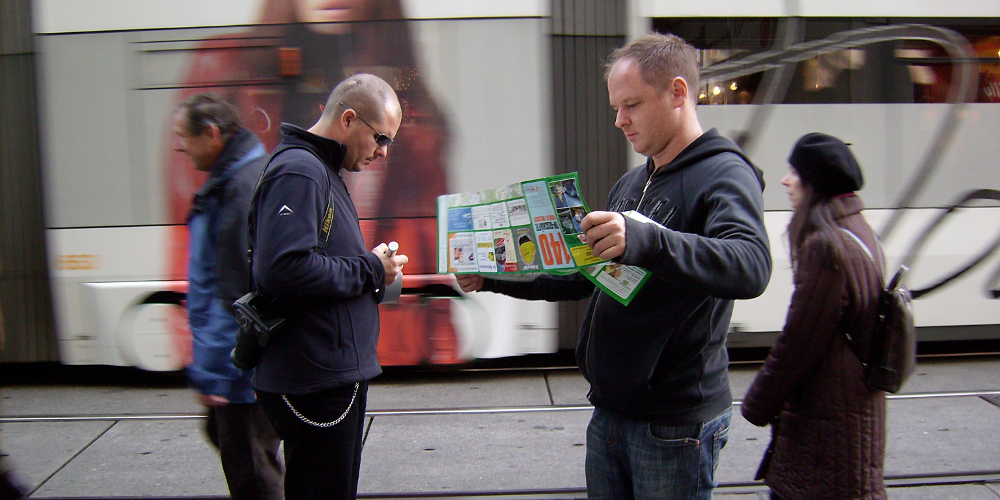We talked to Marcus Neustetter to find out why the naming of streets and squares is significant for the whole identity of a city and how he, a native of Johannesburg, draws parallels between the process of renaming streets in his homeland and what goes on in other cities.
The Austrian postal service’s former inner city logistics center will be the Ars Electronica Festival’s prime venue in Linz September 3-7, 2015, but this year’s theme, POST CITY – Habitats for the 21st Century, will already be the focus of attention in early August in these decommissioned premises amidst the vast yards of Linz’s main rail depot. The Trinity Session, the artistic duo of Stephen Hobbs and Marcus Neustetter, will be staging a participative project with local communities here to answer some pointed questions: To whom does a city’s public sphere actually belong? Whose names are assigned to its streets and squares, and which social and cultural values are manifested thereby? At a series of workshops beginning August 1, 2015, Marcus Neustetter is inviting communities to give the streets and squares of their city new names, dedicate individual thoroughfares or even whole neighborhoods to new purposes, and completely reconceptualize them in the process. The thinking behind this is that the names of streets and squares have usually developed historically, but are these designations still in tune with the times? Our cities are constantly undergoing development, so shouldn’t the names of its streets and squares change too?
We talked to Marcus Neustetter to find out why the naming of streets and squares is significant for the whole identity of a city and how he, a native of Johannesburg, draws parallels between the process of renaming streets in his homeland and what goes on in other cities.
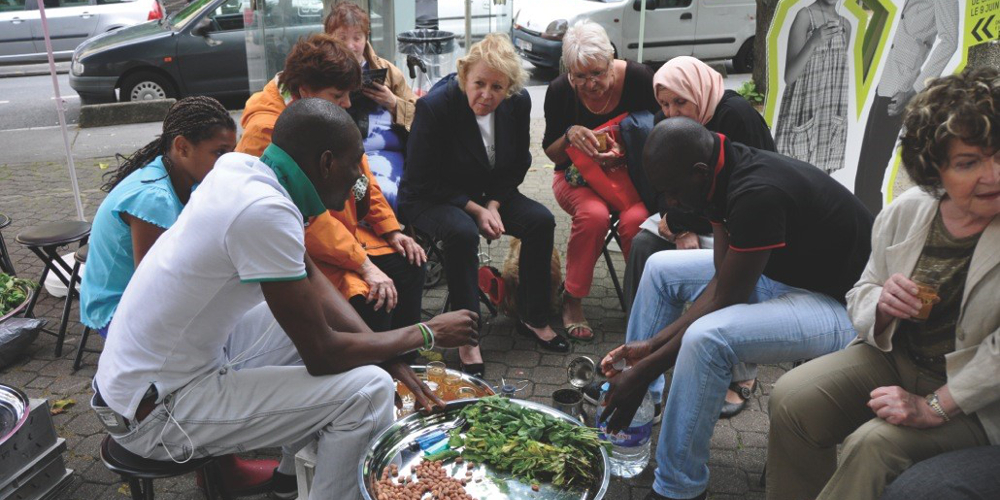 Ataya – West African Tea Ceremony (Credit: The Trinity Session)
Ataya – West African Tea Ceremony (Credit: The Trinity Session)
Marcus, your project examines just what sort of people a city’s streets and squares are—and aren’t—named after. Why is this important?
Marcus Neustetter: Globalization processes are taking place in cities worldwide. Human beings have to learn to live together at close quarters with many different ethnic groups, whereby, for the most part, they encounter each other only in the public sphere. That’s why it’s particularly important for them to be able to identify with these spaces. The designation of a public square with a historical name can help engender awareness of a place’s history; nevertheless, it’s also important that the inhabitants themselves are reflected by their city. Renaming streets and squares is also meant to represent the stories of new city dwellers. This project being produced under the aegis of the Ars Electronica Festival is a means of initiating public confrontations with issues having to do with renaming streets and squares in Linz. It’s meant to enable Linzers to express their conceptions of this urban space by means of new historical narratives, names and experiences.
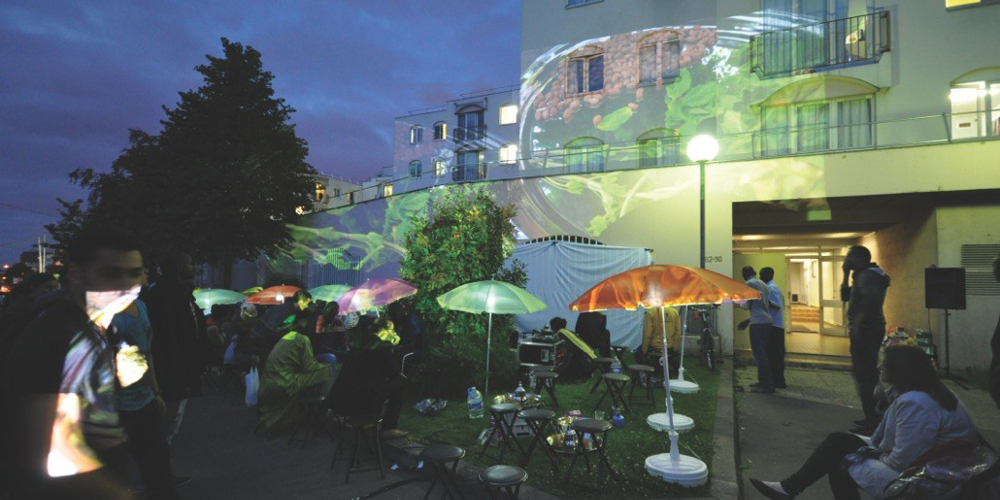 Ataya – West African Tea Ceremony (Credit: The Trinity Session)
Ataya – West African Tea Ceremony (Credit: The Trinity Session)
Who actually has interpretational authority when it comes to street names? And who should have it? In other words, to whom does the public sphere belong, and who ought to determine how it’s configured and named?
Marcus Neustetter: The public sphere is, unfortunately, not always as open and democratic as we would like. The political powers that be, the legal system and many organizations often hinder the dynamic development of a place. There are, of course, examples of positive outcomes, but most of what we see is still stereotypical design that bespeaks prevailing power structures. In a city undergoing constant transformation, it’s often difficult to determine who currently constitutes the general public and who will be filling these public spaces with life in the future. Planning is rarely done with the general public of the future in mind, except, of course, in the case of an urban renewal project in order to appeal to certain investors.
I was born and raised in Johannesburg, and I have personally experienced the transformation of that city over the last 25 years. This is my home, but every day I also feel like an outsider here. No sooner do I get hooked up in a network of city dwellers than I begin to experience how quickly this group goes through changes or even dissolves. I seek out artistic methods to stay updated about the general public that’s living in Johannesburg at the moment.
Working on a new project in 2004, Stephen and I were taking photographs in Hillbrow, one of Johannesburg’s most notorious neighborhoods, and a French-speaking West African man came up and warned us that this is a dangerous area and we should watch out. Now, in South Africa, we have 11 official languages but French isn’t one of them. So, in our own city, we were being treated like tourists by an immigrant. The memory of this incident stayed with us, and, a few years later, when we were invited to produce a project in Dakar, Senegal, we had recourse to this experience. Otherwise, we had no connection to Dakar and had never been there. We were looking for Senegalese immigrants for our project in Hillbrow. Due to the prevalent xenophobia there, most of the immigrants in Johannesburg were pretty reticent and dealt with us mistrustfully. We asked the immigrants in Hillbrow to draw us street maps of Dakar, and we got about 10 hand-drawn maps. And when Stephen and I traveled to Dakar, we attempted to find our way there using these hand-drawn maps. Without Google Maps, current street maps or material from the tourist information office, we roamed Dakar for 10 days. But the most important part of the project didn’t begin until we got back to Hillbrow. We showed the immigrants from Dakar the photos we had taken in Dakar during our tour, and the result was closer relationships to these immigrants, relationships that have lasted to this day and also influenced some of our projects in public spaces in Johannesburg.
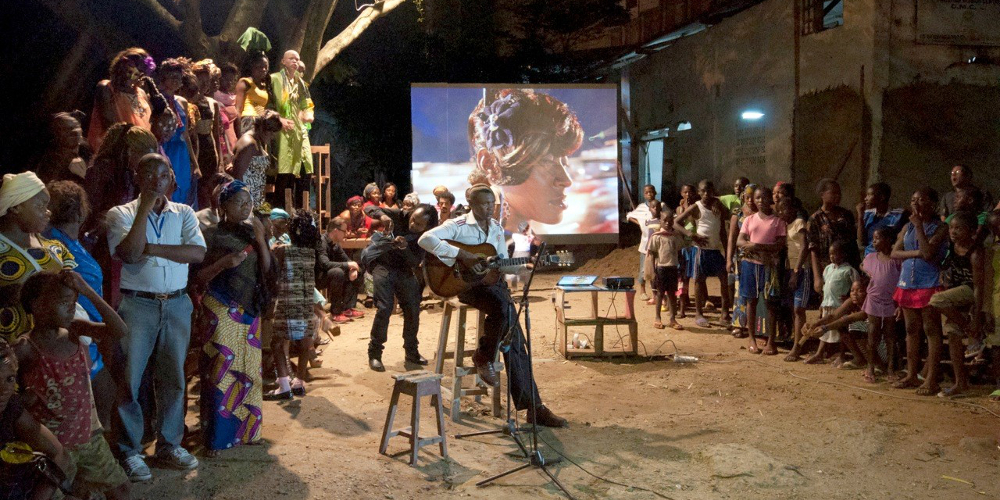 Bessengue B’ Etoukoa (Credit: The Trinity Session)
Bessengue B’ Etoukoa (Credit: The Trinity Session)
So, you live in Johannesburg. Is there a connection between your project and South Africa’s recent history?
Marcus Neustetter: Yes, Stephen and I frequently address the problems facing South Africa and Johannesburg by posing, in our projects in different contexts, questions similar to the ones we deal with at home in Johannesburg. Such a shift in perspective also helps us to further develop solutions for the problems at home. Seen from this angle, the recent history of South Africa is by all means important since we’ve been dealing with renaming the public sphere almost on a daily basis here. Today, in post-Apartheid South Africa, the urban centers that were planned and built by Whites are inhabited predominantly by formerly oppressed people. It’s understandable that this place triggers bad memories, and that it will take a lot of time and changes for the new inhabitants to overcome these negative associations. Renaming the public sphere is only a small part of this; reconfiguring it is also very important. Various design & art solutions have proven their merit lately. Plus, participative processes are new methods of creating local cultural understanding.
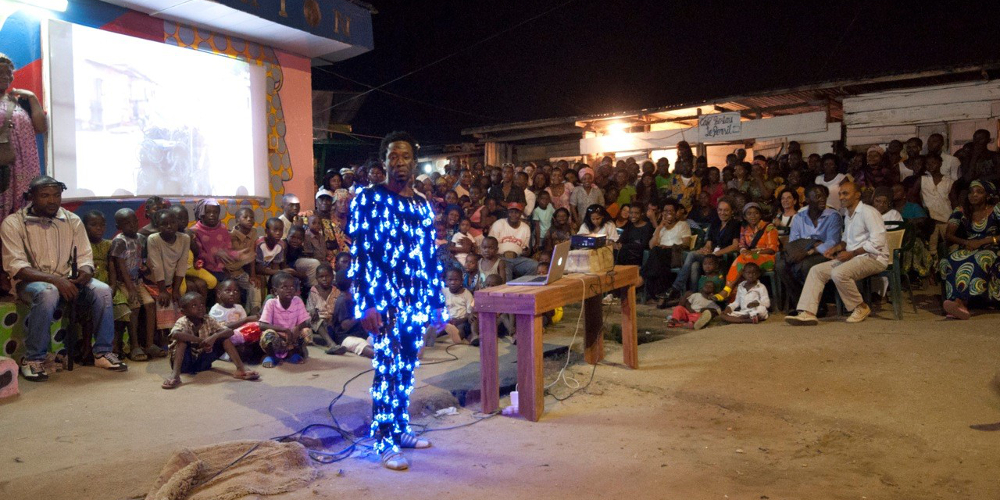 Bessengue B’ Etoukoa (Credit: The Trinity Session)
Bessengue B’ Etoukoa (Credit: The Trinity Session)
The recent refugee tragedies in the Mediterranean remind us that that Europe is now confronted by a growing influx of refugees from North Africa and the Levant—people fleeing from war, persecution and hunger, and risking their lives to reach safety in Europe. Once they’ve accomplished this and ever after having been officially granted asylum here, they’re frequently confronted by prejudice, rejection and xenophobia. To what extent is this attitude reflected by the names of our streets and squares?
Marcus Neustetter: It seems to me that the world’s getting smaller and I think that, slowly, the difference between people has to diminish too. The colonial powers that grew rich by conquering and oppressing others simultaneously created dependencies that are only gradually breaking down. This isn’t only a matter of concrete measures like renaming streets; even more important is encouraging people to consider how public places should be named and what they should look like in order to do justice to the people who will be using them. The essence of this is the fundamental acceptance of The Other. We don’t expect that the streets will really be given new names, but we hope they will. But even if they aren’t, it’s important to imagine for a moment what such a change could mean—for oneself and for the others. This action is meant as a first step in that direction, even if it’s only in the form of an experiment. It’s also intended as a provocation aimed at municipal agencies as well as a way for local residents to personally grapple with this issue. Often, actions like this help kick off a discourse.
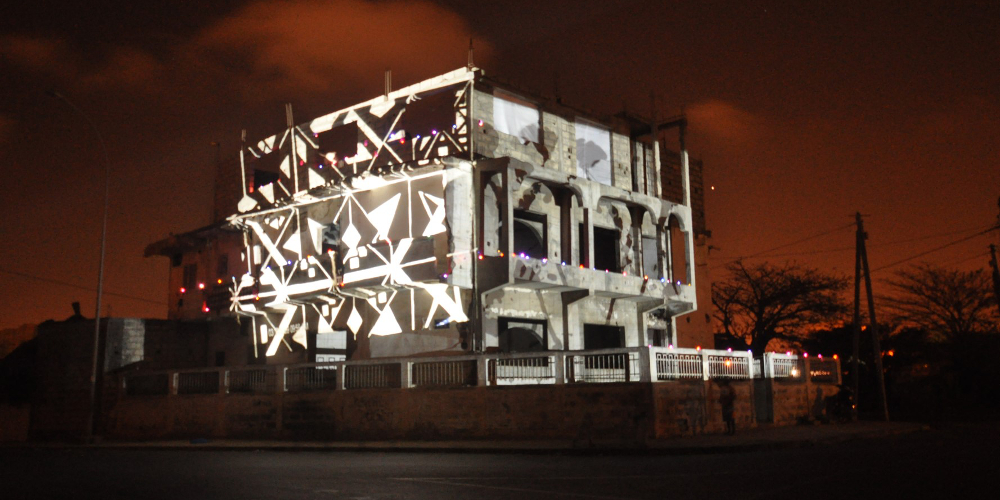 Entracte (Credit: The Trinity Session)
Entracte (Credit: The Trinity Session)
When you peruse the list of street names in some Austrian cities, you quickly come across the names of people who are regarded among historians as controversial at the least and sometimes highly problematic. What does this say about the process of coming to terms with the past here, the prevailing power structures, and ultimately the identity of our society?
Marcus Neustetter: In South Africa, I’ve discovered that people frequently don’t have the slightest idea about the person the street they live on is named after. Usually, we get accustomed to a name and start giving some thought to its significance only when there’s a proposal to rename it or the public space is needed for another purpose. In post-Apartheid South Africa now—20 years after the political turnaround—old monuments are being willfully damaged and even names like Market Street are being changed. This need, 20 years later, to change the previous system’s symbols of power makes a clear statement about the society. Consciously living with such street names is indicative of a problematic social situation. In these cases, there seems to be a severe lack of tolerance and sensitivity towards the new inhabitants.
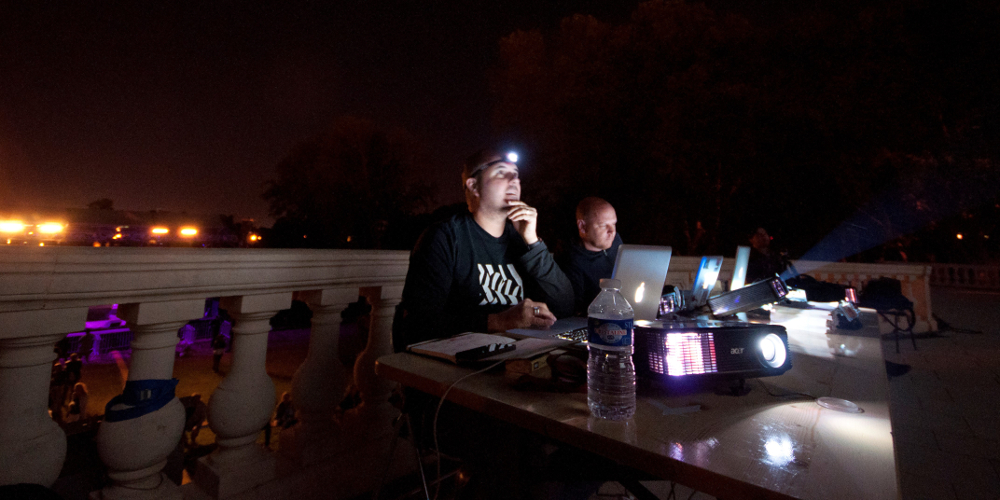 Stephen Hobbs und Marcus Neustetter (Credit: The Trinity Session)
Stephen Hobbs und Marcus Neustetter (Credit: The Trinity Session)
People from over 140 countries live in Linz today—a social realty that is hardly at all reflected by the names of this city’s streets and squares. Why do enlightened, modern societies have such a terribly hard time accepting obvious facts and irreversible developments? Wouldn’t it make much more sense to attempt to identify and take advantage of the opportunities this entails than to carry on a hopeless struggle tilting at windmills?
Marcus Neustetter: Territoriality seems to be inherent in human nature. In the various cultures, there are highly divergent definitions of territoriality and property. The feeling of being able to settle down anywhere in combination with the development of our transportation & communications networks, as well as famine and war, are what lead to migration. I believe we have no other choice anymore than to adjust and develop tolerance. Those who have long ruled over a particular territory aren’t pleased by the prospect of giving that up, and those who have only recently assumed power want even more and do everything to maintain the power they’ve acquired. In light of all the people who are absolutely powerless, I often ask myself whether these people can feel at home in any city.
A few years ago, I posed this question to a woman I know who emigrated from Mali 15 years ago and has lived with her family in the north of Paris ever since. She told me that she feels at home only when she has something to celebrate like a birth, at a wedding or a funeral. The reason for this is that, amidst the community of her family and friends, she can freely live out her personal cultural rituals and customs.
The public sphere in most big cities I’m familiar with is now subjected to a higher degree of control. So how will it be possible to impart a feeling of being at home to the future multicultural inhabitants of a city if its public sphere doesn’t make cultural exchange possible?
What role can and should art play in the context of a social transformation process like this?
Marcus Neustetter: Artists have a natural affinity to a city’s immigrants because both groups exist on a society’s periphery and thus encounter one another on the same level. Artists are those whose works and actions pose questions and arouse attention. Inspired by social transformation processes, they can bring the similarities and differences of a situation to light and create awareness of change. Participative and process-oriented art—that sometimes isn’t even perceived as art per se—can quickly lead to alternative, feasible design solutions and interdisciplinary collaborations that are much better suited to a contemporary, diversified society.
For details about this project and other preliminary events in the former postal service logistics center leading up to the 2015 Ars Electronica Festival, click here: https://ars.electronica.art/postcity/en/preevents/
